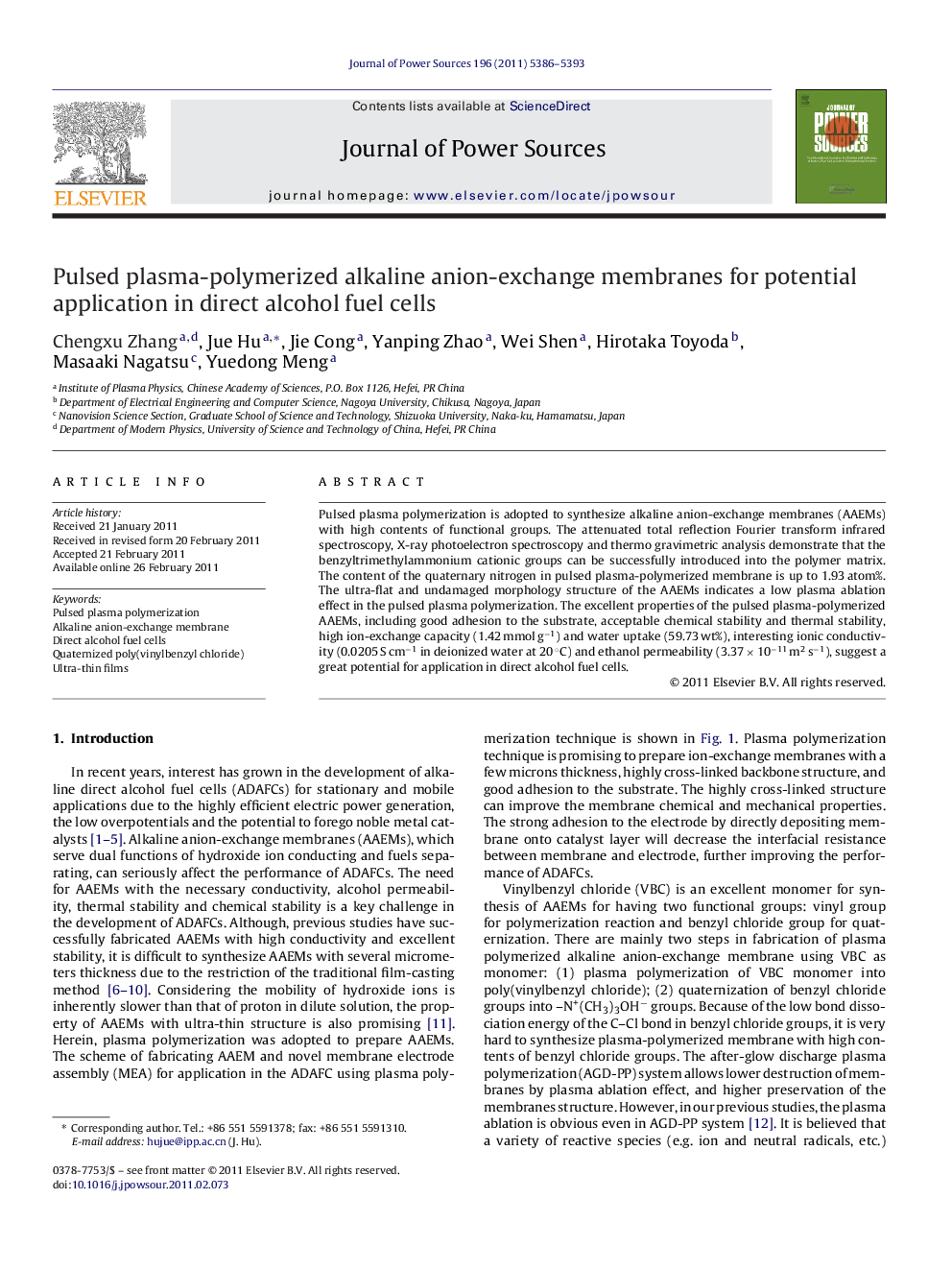| Article ID | Journal | Published Year | Pages | File Type |
|---|---|---|---|---|
| 1293446 | Journal of Power Sources | 2011 | 8 Pages |
Pulsed plasma polymerization is adopted to synthesize alkaline anion-exchange membranes (AAEMs) with high contents of functional groups. The attenuated total reflection Fourier transform infrared spectroscopy, X-ray photoelectron spectroscopy and thermo gravimetric analysis demonstrate that the benzyltrimethylammonium cationic groups can be successfully introduced into the polymer matrix. The content of the quaternary nitrogen in pulsed plasma-polymerized membrane is up to 1.93 atom%. The ultra-flat and undamaged morphology structure of the AAEMs indicates a low plasma ablation effect in the pulsed plasma polymerization. The excellent properties of the pulsed plasma-polymerized AAEMs, including good adhesion to the substrate, acceptable chemical stability and thermal stability, high ion-exchange capacity (1.42 mmol g−1) and water uptake (59.73 wt%), interesting ionic conductivity (0.0205 S cm−1 in deionized water at 20 °C) and ethanol permeability (3.37 × 10−11 m2 s−1), suggest a great potential for application in direct alcohol fuel cells.
► The content of the quaternary nitrogen in pulsed plasma-polymerized membrane is up to 1.93 atom%. ► The hydroxyl ion conductivity of pulsed plasma-polymerized alkaline anion-exchange membrane is 0.0205 S cm−1 in deionized water at 20 °C. ► The pulsed plasma-polymerized AAEMs can be used safely at <100 °C.
